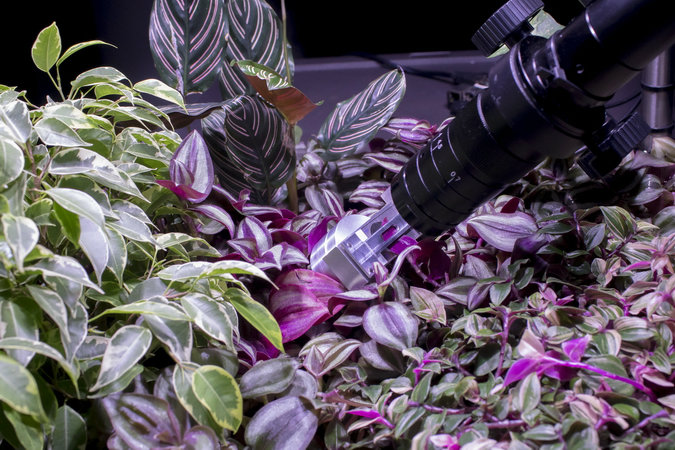Špela Petrič
Institute for Inconspicuous Languages: Reading Lips

A laboratory follows the near-future experiments documented by the journal Science; namely, a paper in which scientists describe the first meaningful exchange between a plant and a human, which could, in a broader sense, be described
as a conversation. The lucidly conceived experiment demands exceptional patience and total dedication from both sides – after 18 years of mutual learning, Tradescantia zebrine, or the inchplant, and the human researcher learn to understand
each other’s signs. The report from the future describes how Pavlov conditioning is implemented to teach the plant the basic signs for 'more', 'less', and 'stop' and to eventually develop a code using light and lips that can be recorded
and translated into human language.
At the Institute for Inconspicuous Languages we are able to sidestep decades of dedication and, with the help of natural and artificial intelligence, peer into the plant’s psyche by carefully
reading its lips – the thousands of microscopic, 'tiny mouths' (stomata) through which the inchplant breathes, speckled underneath each leaf.
What are the plants saying?
Špela Petrič, BSc, MA, PhD, is
a Slovenian new media artist and former scientific researcher currently based between Ljubljana and Amsterdam. Her practice is a multi-species endeavour, a composite of the natural sciences, wet media, and performance. She envisions
artistic experiments that enact strange relationalities to reveal the ontological and epistemological underpinnings of our (bio)technological societies and challenge the scope of the adjacent possible. Much of her recent work has focused
on plant life. Her work has been shown at many festivals, exhibitions, and educational events. She has received several awards for her work, including the White Aphroid for outstanding artistic achievement, the Bioart and Design Award,
and an Award of Distinction at Prix Ars Electronica
//spelapetric.org